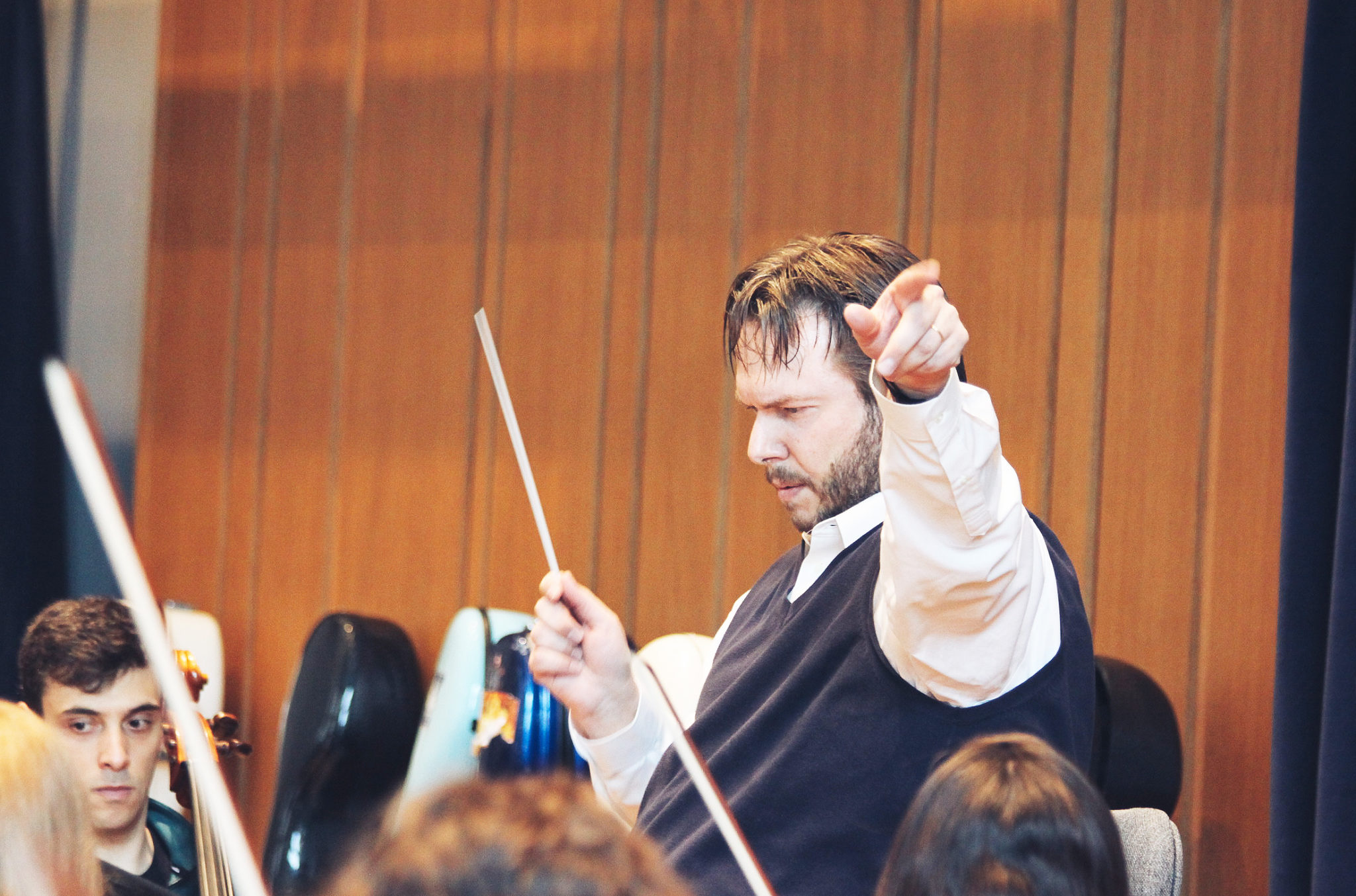
Yale School of Music
According to conductor Ignat Solzhenitsyn, César Franck’s Symphony in D minor is “filled with some of the most memorable and noble themes and melodies ever written,” leaving listeners “haunted” by its themes.
On Friday, the Yale School of Music’s Philharmonia, led by guest conductor Solzhenitsyn, will bring the memorable melodies of Franck’s symphony to Woolsey Hall, in a program that also includes works by Stravinsky and Paganini.
“The goal [is] to get as many people as possible excited when they come into contact with these masterpieces,” Solzhenitsyn said.
The performance will open with the 1919 version of the “Firebird Suite,” the orchestral suite from 20th century Russian composer Igor Stravinsky’s ballet “The Firebird.” In 1910, Sergei Diaghilev’s Ballets Russes ballet company premiered the ballet in Paris. According to Solzhenitsyn, in the “Firebird Suite,” Stravinsky captures a “wonderfully modern feel.”
Though a 20th-century style characterizes the music, the story of the ballet derives from an ancient Russian folktale. Solzhenitsyn described the fairytale as at once “frightening and wondrous,” with its story of a prince, captive princesses, magic spells, the mystical Firebird and a triumph of good over evil.
“[‘The Firebird’] an archetypal folktale then given this amazingly evocative and relevant treatment by Stravinsky,” Solzhenitsyn said.
According to Solzhenitsyn, this treatment involves Stravinsky’s use of “imaginative and rich colors” throughout the suite.
Violinist Emily Switzer MUS ’19 echoed this sentiment, remarking that the piece is “all about the texture, shape and color.”
Switzer also noted that playing the “Firebird Suite” has allowed her to learn and perform another composition by Stravinsky, following the Philharmonia’s September 2017 performance of “The Rite of Spring,” led by Philharmonia principal conductor Peter Oundjian.
The group will then perform Italian composer Niccolò Paganini’s “Sonata per la Grand Viola,” with viola soloist Josip Kvetek MUS ’18, who earned a chance to perform with the Philharmonia after being named one of the winners of the 2017 Woolsey Hall Competition.
Kvetek described the piece, which Paganini completed in 1834, as a fun and playful work intended to “shock and entertain” the audience. Kvetek noted that the work is designed to allow the viola soloist as many opportunities as possible to showcase technique, speed and mastery of the instrument.
Solzhenitsyn said that the piece allows all audience members to “have a good time” while listening. He added that the piece offers a “general atmosphere of conviviality, a certain teasing grace and a charming wit.”
“The piece doesn’t require much effort from the listener — it’s like an after dinner drink or a dessert, to just savor and enjoy,” Solzhenitsyn said.
He added that the piece is in several ways a “curiosity,” partially because it is a concerto for viola, which Solzhenitsyn said would have previously been “almost inconceivable” to audiences due to its rarity. Solzhenitsyn also noted that a viola concerto seems like a curious choice for Paganini, who is best known for his compositions for violin, including violin caprices and concerti.
The program will conclude with Franck’s Symphony in D minor. Solzhenitsyn described Franck as a “German composer in a Frenchman’s body” — though Franck spent his professional career in Paris, he was “beholden to this noble, exalted, pure world” of German composers such as Wagner and Bruckner.
Solzhenitsyn added that this symphony, and many of the composer’s other important works, are characterized by the repetition and reintegration of two or three key themes. Sometimes, these repetitions occur at moments the listener does not expect, and sometimes they are transformed by stretching out the melodies so they take longer for the orchestra to play. Solzhenitsyn said Franck’s use of thematic transformation can be “picked up as the piece unfolds” even by first-time listeners.
Switzer noted that characterizing these repeating motifs was one aspect of the symphony that Solzhenitsyn focused on practicing during rehearsals.
“My goal is not just to teach the piece to the orchestra, but also to lead them in a way that they – especially those who may not know it yet – fall in love with it,” Solzhenitsyn said.
Solzhenitsyn serves as the principal guest conductor of the Moscow Symphony Orchestra and is the conductor laureate of the Chamber Orchestra of Philadelphia.
Julia Carabastos | julia.carabastos@yale.edu







